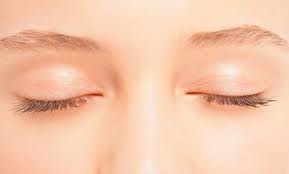+Plucking grey hair won't make more grow
+Plucking grey hair won't make more grow, "Don't cross your eyes or they'll stay that way," mothers tell their children, or "Carrots will help you see better." From childhood, we are exposed to adages and remedies from the past. Even into adulthood, the sayings stick, and some old wives tales seem to get more relevant with age. When that first gray hair makes an appearance, you may wonder if it really is true that plucking out that gray hair will just doom you to more.The Easy Answer
The easy answer is no. Of course plucking out one gray hair will not make more gray hairs grow in its place. It won't even make more colored hairs grow in its place. Logic will tell you that if this were true, nobody would be bald or have thinning hair, gray or not. The human scalp has 100,000 to 150,000 hair follicles capable of producing several hairs in a lifetime, but only one at a time. Eighty to 90 percent of these follicles are in an active growth phase at any given time; the other 10 to 20 percent are in a resting phase.
About Hair Color
Surprise---hair is actually white to begin with. The keratin protein cells, or keratinocytes, that make up our hair, nails and skin are colorless. The color comes from the pigment melanin, manufactured by keratin's neighbors, melanocytes, which give the keratinocytes color. The various shades of human hair are combinations of only two shades of melanin: dark eumelanin (brown or black) and light pheomelanin (red or yellow). Loss of melanin means loss of color; gray hair may still have some pigment left, but white hair has none.
How Does Hair Turn Gray?
Pulling out a gray hair does not magically make the next hair to grow in gray. The process has more to do with heredity and aging than anything else, though other factors may play a role. After a hair follicle's resting phase, new keratin and melanin cells are made from the stem cells of the follicle. Melanin stem cells are not as long-lived as keratin stem cells. Younger people keep a balance of the two cell types, but as aging occurs, according to Emi Nishimura of Tokyo Medical and Dental University, more stem cells mature into melanocytes, which have less longevity than keratinocytes. Eventually, the pool of melanocytes decreases and the hair goes gray.
The Role of Stress
While personal and work stresses may not cause graying, there are clues that stress may speed it up. Dr. Tyler Cymet, of Sinai Hospital in Baltimore, thinks graying hair is "genetically outlined, and lifestyle gives you a variation of plus-or-minus five to 10 years." According to Emi Nishimura's 2009 study, it is cellular stress in the form of damage to DNA that is actually responsible for graying hair, and melanocytic stem cells are the most affected. The stressors causing damage can include ultraviolet light from the sun and ionizing radiation. Other factors that might affect hair pigment include climate, pollutants, toxins and chemical exposure.
Bleached Gray?
Also in 2009, while studying vitiligo, a disease of pigment loss in the skin, researchers at the University of Bradford in the United Kingdom found that too much hydrogen peroxide blocks the action of melanin, even in the hair follicles. That bleaching agent is produced naturally by the human body, along with the enzyme catalase, which breaks it down into water and oxygen. As we age, catalase production tapers off, leaving us with a buildup of hydrogen peroxide that interferes with the melanin, bleaching hair naturally.
Read more: ehow
